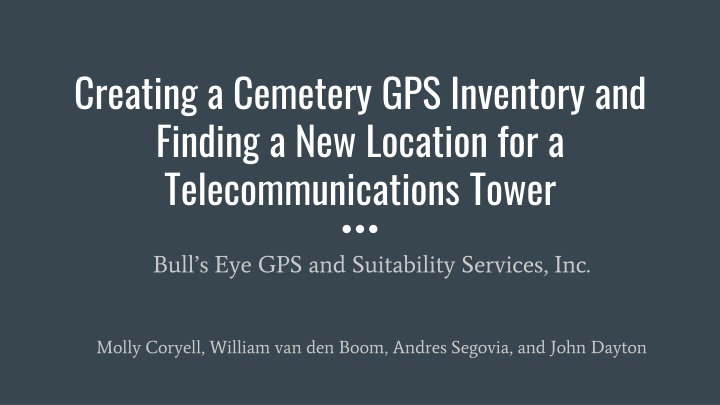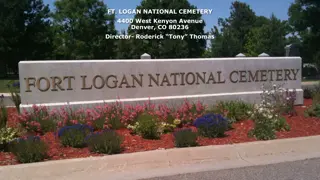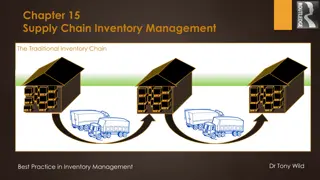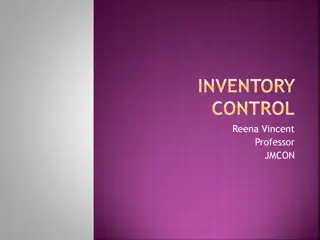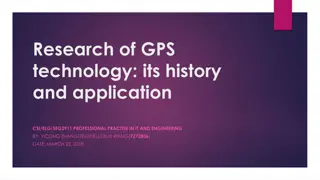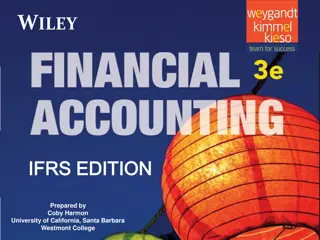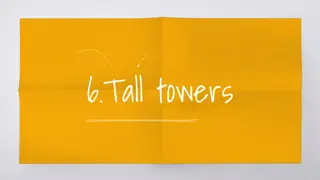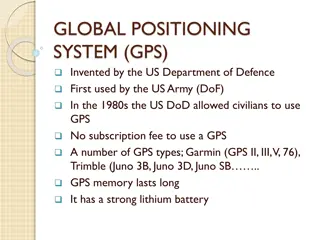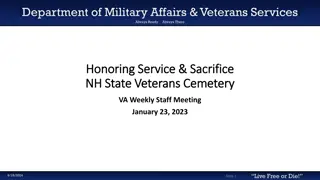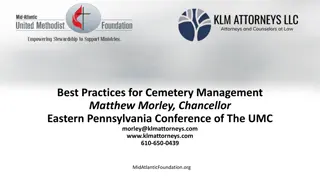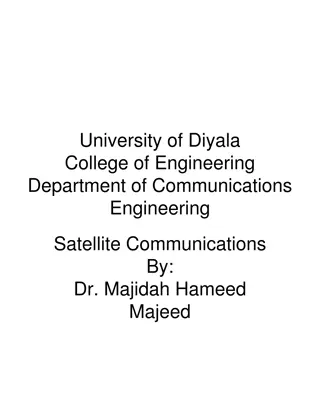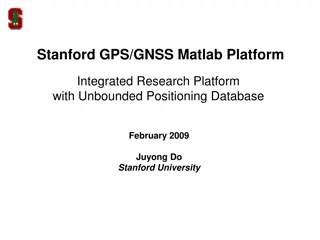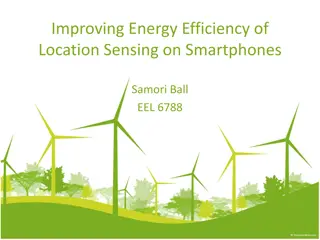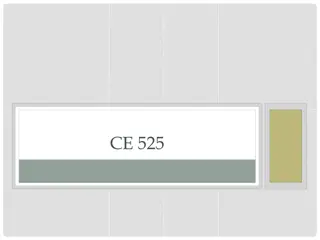Cemetery GPS Inventory & Telecommunications Tower Location Project
Digitizing the Tower Addition section of the historic San Marcos City Cemetery and identifying an optimal location for a new telecommunications tower. The project involves creating a digital inventory of grave sites and integrating the data into a cemetery management software system. Utilizing various data sources such as aerial imagery, boundary outlines, and contour lines, the focus remains on the western boundary area of the cemetery for analysis and suitability assessment.
Download Presentation

Please find below an Image/Link to download the presentation.
The content on the website is provided AS IS for your information and personal use only. It may not be sold, licensed, or shared on other websites without obtaining consent from the author.If you encounter any issues during the download, it is possible that the publisher has removed the file from their server.
You are allowed to download the files provided on this website for personal or commercial use, subject to the condition that they are used lawfully. All files are the property of their respective owners.
The content on the website is provided AS IS for your information and personal use only. It may not be sold, licensed, or shared on other websites without obtaining consent from the author.
E N D
Presentation Transcript
Creating a Cemetery GPS Inventory and Finding a New Location for a Telecommunications Tower Bull s Eye GPS and Suitability Services, Inc. Molly Coryell, William van den Boom, Andres Segovia, and John Dayton
Background Problem Statement and Purpose Outline Scope Data Methodology Results Conclusion
Background The San Marcos City Cemetery, founded in 1874, is located on 45 acres at 1001 Ranch Road 12 in San Marcos. The cemetery is the burial ground for many Texas pioneers and veterans of wars dating back to the War of 1812. The cemetery lies within a Mexican land grant acquired by Thomas Chambers in 1834. Chambers died in 1865 and in 1867 his widow, Abbey, sold 3,000 acres containing this site to H.N. Duble at an estate sale held in Galveston. A portion of the cemetery site was purchased by Freedman Peter Roberts in Galveston in 1868. It's also believed that there were slaves buried at this site from the earliest settlers making it a very unique burial ground containing soldiers of war, pioneers, Native Americans, and the local population of San Marcos that has resided in this community for the past 150 years.
Problem Statement and Purpose The purpose of our project is to digitize the Tower Addition section of the cemetery as well finding the best location for a new telecommunications tower. We were also asked to create a digital inventory of grave sites of the Tower Addition of the San Marcos cemetery. Our work will be used for integration into a software program known as Pontem, Pontem is a cemetery management software system that was developed for maintaining all of your cemetery s grave, owner, burial, and genealogical records.
Scope The study area has remained the with the same focus on the Tower Addition [red] located on the western boundary of the San Marcos City Cemetery.
Data Name Purpose Data Type Data Creator 2015 Orthophoto TIFF City of San Marcos Depicts an aerial image of the study area. Cemetery Boundary Polygon City of San Marcos Outlines the cemetery area. Proposed LCRA Tower Point City of San Marcos Shows the two possible locations for the new telecommunications tower. Lines showing contour intervals every 2 feet. Needed in order to create a TIN surface that is needed to create the DEM. Contour Lines Lines City of San Marcos Ramsey Addition Polygon Super GPS Bros Outlines the boundaries for the Ramsay Addition of the San Marcos Cemetery. Ramsey Section 3 Polygon Super GPS Bros Outlines the boundaries for the Ramsay Addition, Section 3 of the San Marcos Cemetery.
Ramsey Section 3 Blocks Polygon Super GPS Bros Outlines the boundaries for the Ramsay Addition, Section 3 eight and four blocks of the San Marcos Cemetery. Ramsey Section 3 Graves Polygon Super GPS Bros Outlines the boundaries for the Ramsay Addition, Section 3 grave plots of the San Marcos Cemetery. Tower Addition Polygon Bull s Eye GPS & Suitability Services Outlines the boundaries for the Tower Addition of the San Marcos Cemetery. Tower Addition Blocks Polygon Bull s Eye GPS & Suitability Services Outlines the boundaries for the Tower Addition eight and four blocks of the San Marcos Cemetery. Tower Addition Graves Polygon Bull s Eye GPS & Suitability Services Outlines the boundaries for the Tower Addition grave plots of the San Marcos Cemetery. Created from contour lines in order to show the surface morphology. TIN Polygons Bull s Eye GPS & Suitability Services DEM Needed in order to perform the visibility tool in order to determine which tower location would be the most visible in a 5 mile radius. Raster Bull s Eye GPS & Suitability Services
Original Methodology
Final Methodology
Final Methodology (cont.)
Tower 1 Results Visibility: 25,123 raster unit cells Not Visible: 17,312 raster unit cells Ratio between Visibility and Non Visibility is 1.45:1
Tower 2 Results Visibility: 24,600 raster unit cells Not Visible: 17,836 raster unit cells Ratio between Visibility and Non Visibility is 1.38:1
Result Comparison Ratio between Tower 1 and 2 is 1.45:1.38 Tower 1 has 523 more visible raster unit cells Due to 10 ft height difference (Tower 1: 805 ft, Tower 2: 795 ft) Due to 510 ft distance between each other resulting in different 5 mile radius Slope between locations: .0196
Cemetery GPS Inventory Map 160 Grave Blocks 920 Grave Plots
Conclusion Quantitative analysis is crucial for locating LCRA Tower locations even if they re only a few yards apart. GPS is important to learn but not crucial for the completion of the cemetery digitization. The Hill Country region s terrain requires viewshed analysis to help understand the big picture of visibility. Digitizing grave sites will benefit families and friends of the deceased for years to come and can help preserve gravesites that can be damaged by weathering.
